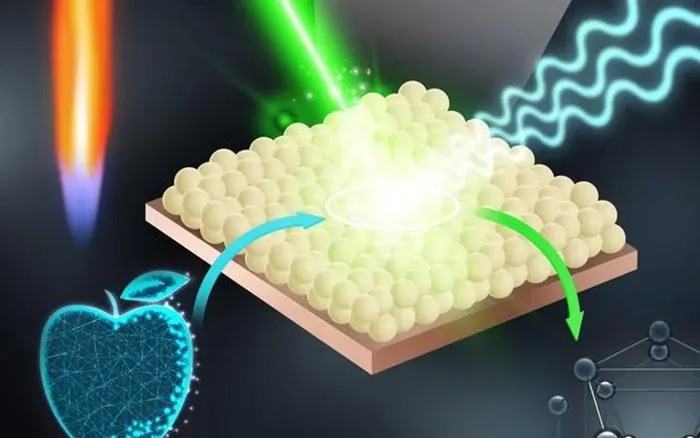Sensors quickly detect pesticides in fruit
To help consumers quickly detect pesticide residues on fruits and vegetables, experts at Karolinska Institutet, Sweden (KI), have developed a micro sensor that can detect pesticides on fruits and vegetables. plants within minutes.

This sensor detects pesticides in fruit in just a few minutes.
These are the nanosensors that "come out" from the invention in the 70s of the last century called SERS (Surface-enhanced Raman Spectroscopy or Surface-enhanced Raman scattering), increasing the biomolecular diagnostic signal. learning on metal surfaces more than 1 million times.
KI's nanosensors are reproducible, inexpensive and universal compared to traditional techniques. Can be used to track traces of pesticides on fruit at the store. It is made by using a flamethrower technique to evenly distribute silver nanoparticles onto the glass surface. Next, the team fine-tuned the distances between individual silver nanoparticles to improve sensitivity.
Sensitivity testing shows that the sensor reliably detects residues of toxins and uniforms the molecular signals and performance after 2 and a half months of existence on the surface of the test product. In the test, low concentrations of parathion-ethyl, an agricultural pesticide banned or restricted in most countries, were applied to apples. As a result, KI detected pesticide residues on the surface of apples within 5 minutes without damaging the fruit.
- Unexpected discoveries of tiny fruit flies
- 5 minutes to detect pesticides in food
- Develop new sensors to detect early disease
- Sugar sensors help detect and prevent disease
- Sensors help determine the amount of medicine deep in the water
- Ultra-fast pollutant detector
- Surprise with the effects of the fruit
- Never buy fruits whose code starts with 8
- How to 'reduce' pesticides in vegetables
- Detection: Good pesticides for mulberry trees but for silkworms
- 15 kinds of fruits in Vietnam are listed in the 25 most exotic fruits in the world
- Developed seat sensor to help detect drunk drivers
 'Barefoot engineer' invents a pipeless pump
'Barefoot engineer' invents a pipeless pump Process of handling dead pigs due to disease
Process of handling dead pigs due to disease Radiometer
Radiometer Warp Engine: Technology brings us closer to the speed of light
Warp Engine: Technology brings us closer to the speed of light Mud Volcano in Indonesia - A Devastating Natural Disaster from Both Natural Force and Human Greed
Mud Volcano in Indonesia - A Devastating Natural Disaster from Both Natural Force and Human Greed  Rare photos from the surface of Venus
Rare photos from the surface of Venus  First detection of traces of CO2 and H2O2 on the surface of the moon Charon
First detection of traces of CO2 and H2O2 on the surface of the moon Charon  Find out the reason for the nightly migration of trillions of zooplankton
Find out the reason for the nightly migration of trillions of zooplankton  The rover found the scary 'evil eye' on Mars
The rover found the scary 'evil eye' on Mars  NASA spacecraft is about to fly through Venus' hellish atmosphere
NASA spacecraft is about to fly through Venus' hellish atmosphere 